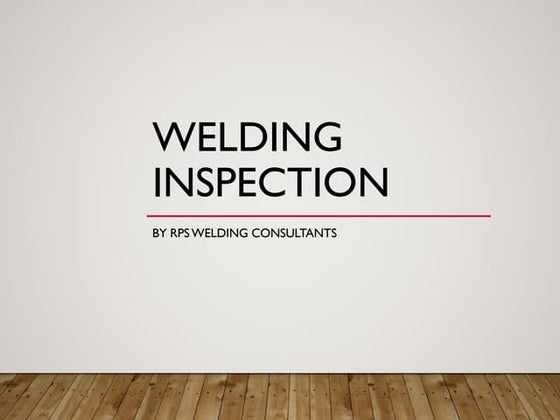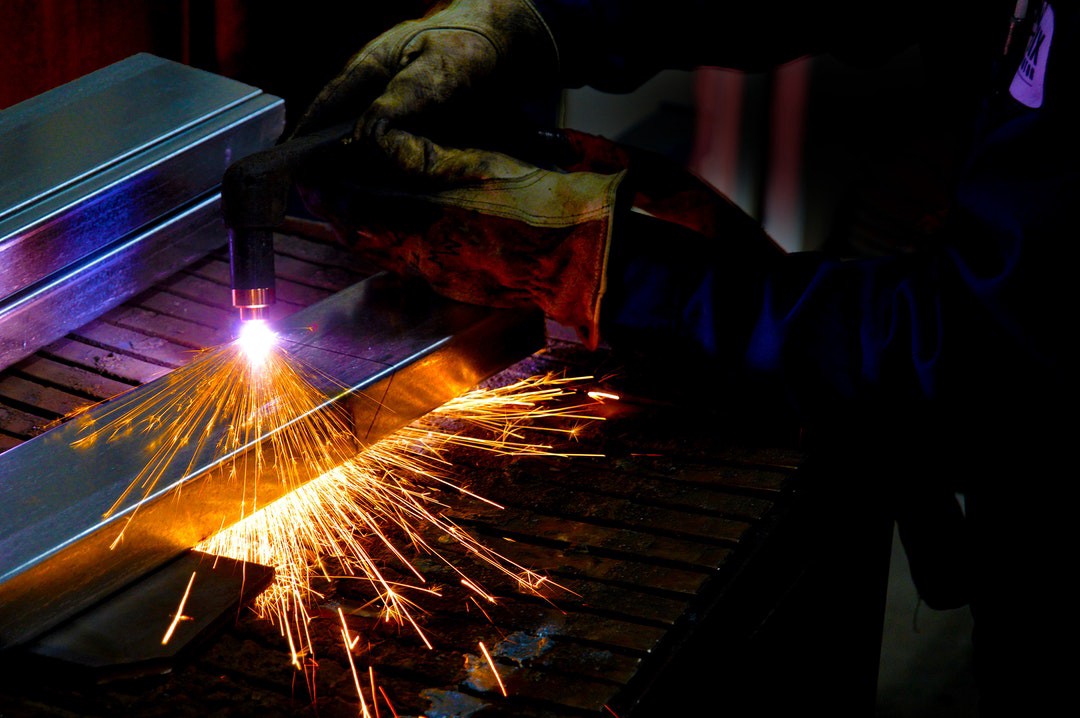A Comprehensive Guide to Welding Assessment: Comprehending Specifications, Techniques, and Best Practices for Top Quality Assurance
Welding evaluation plays a critical duty in ensuring the architectural stability and security of welded elements, requiring an extensive understanding of sector requirements such as those established by AWS and ASME. As we check out these vital components, it comes to be evident that the implications of welding assessment extend much beyond conformity, welcoming a closer exam of exactly how these procedures shape sector requirements and practices.
Value of Welding Evaluation
Welding inspection plays a critical role in making sure the honesty and security of bonded structures. It is a necessary procedure that confirms that welds comply with predefined specs, which is vital in different markets, consisting of building and construction, automobile, and aerospace. By conducting thorough examinations, possible issues such as cracks, incomplete fusion, and porosity can be identified early, avoiding tragic failures that might bring about mishaps or expensive repair services.
The relevance of welding inspection prolongs past plain conformity with guidelines; it also fosters depend on with stakeholders. Clients and regulative bodies expect assurance that the structures they count on are built to hold up against functional tensions. Effective welding examination techniques add to lasting durability and efficiency of the structures, inevitably leading to minimized maintenance costs.
In addition, welding assessment advertises a culture of top quality within companies, urging adherence to best techniques and constant renovation. By integrating examination procedures into the welding operations, firms can boost their reputation and develop themselves as leaders in quality control. To conclude, the relevance of welding inspection exists in its ability to secure lives, make certain structural reliability, and promote sector requirements, making it an indispensable element of welding procedures.
Trick Industry Criteria
Guaranteeing compliance with crucial industry requirements is essential for maintaining the quality and safety and security of welded structures. Various companies develop these standards to advertise best practices in welding and inspection. Among one of the most acknowledged are the American Welding Culture (AWS) and the American Society of Mechanical Designers (ASME), which offer thorough guidelines and requirements for welding processes and examination criteria.
AWS criteria, such as AWS D1.1 for structural welding, synopsis requirements for products, design, and testing to guarantee the honesty of welds. ASME codes, consisting of ASME Area IX, govern the qualification of welders and welding procedures, ensuring regular quality in commercial applications. Globally, the ISO 3834 basic highlights high quality demands for combination welding, supplying a framework for companies to show compliance with worldwide ideal techniques.
Conformity with these requirements not just improves the integrity of bonded frameworks however also reduces risks connected with structural failings. Adherence to sector requirements is commonly a requirement for regulative approvals and can considerably influence project requirements. Ultimately, understanding and applying these essential requirements are vital for effective welding inspection and quality guarantee.
Inspection Techniques Overview
Efficient welding assessment counts on a variety of strategies designed to examine the quality and stability of welds. These techniques can be broadly classified into non-destructive and devastating screening (NDT) approaches. Non-destructive testing techniques, which are commonly preferred in the sector, allow for the evaluation of welds without jeopardizing the integrity of the product.
Among one of the most frequently utilized NDT techniques are aesthetic evaluation, ultrasonic testing, radiographic testing, and magnetic bit testing. Aesthetic evaluation is often the very first step in the evaluation procedure, enabling examiners to recognize surface flaws and analyze weld bead profiles. Ultrasonic screening employs high-frequency acoustic waves to spot interior imperfections and measure the thickness of welds. Radiographic screening entails the use of X-ray or gamma-ray imaging to expose inner defects, while magnetic bit screening works for discovering surface area and near-surface suspensions in ferromagnetic products.
Each method has its own advantages and restrictions, making it crucial for inspectors to select one of the most appropriate method based upon the certain needs of the job, the go to this site products included, and the urgency of the welds being checked. This cautious choice makes sure detailed evaluations and supports security and high quality requirements in welding procedures.

Common Defects and Their Ramifications
A detailed understanding of usual flaws in welds is critical for keeping architectural stability and safety in welded building and constructions. Welding issues can dramatically jeopardize the mechanical buildings of the joint, causing failures that could jeopardize both employees and devices.
Common issues consist of porosity, which manifests as tiny gas pockets trapped in the weld steel, deteriorating the overall framework. Splitting is one more prevalent concern, typically resulting from quick cooling or improper joint design, bring about tension concentrations that can cause disastrous failures. Insufficient fusion takes place when the weld metal falls short to correctly bond with the base product, creating weak factors that may bring about separation under lots.
Various other notable problems consist of damaging, where the weld grain wears down the base steel, and slag inclusions, which can impede the weld's stamina. Each of these defects has particular ramifications; for example, porosity can decrease ductility, while splitting straight affects tensile toughness. Identifying and comprehending these issues throughout evaluation is necessary for ensuring and implementing restorative procedures compliance with market requirements, eventually guarding the architectural honesty of bonded settings up.
Ideal Practices for Quality Assurance
Implementing best practices for quality control in welding procedures is necessary for attaining optimum outcomes and decreasing issues. One critical practice is the facility of clear welding treatments that stick to sector standards and specifications. These procedures should consist of thorough guidelines pertaining to product choice, joint preparation, and welding methods to guarantee consistency and high quality.
Normal training and qualification of welding personnel are additionally essential. Skilled welders that comprehend the significance of quality control are more probable to create audio welds. Additionally, implementing a robust examination program, consisting of both aesthetic and non-destructive screening (NDT), can assist identify issues early at the same time, permitting prompt restorative actions.
Documents plays a crucial role in quality control. Maintaining exact documents of welding repair services, inspections, and specifications makes certain traceability and responsibility. Furthermore, utilizing innovative technologies such as automated welding makers can enhance precision and lower the potential for human error - Welding Inspection Gilbert Arizona.
Finally, cultivating a society of quality within the organization urges workers to focus on top quality in their job. By adhering to these finest techniques, companies can enhance the integrity of their welding processes, eventually causing boosted product high quality and lowered prices related see post to rework and repair work.

Conclusion
Finally, welding assessment plays a vital role in making sure the honesty and safety and security of welded structures. Adherence to essential market requirements, such as those developed by AWS and ASME, is crucial for effective quality control. Employing various evaluation methods permits the identification of usual defects, thereby mitigating potential risks. By implementing best techniques, companies can boost integrity, lessen upkeep expenses, and cultivate count on amongst check my site customers, eventually adding to successful welding operations.
In addition, welding assessment promotes a culture of quality within companies, motivating adherence to best techniques and constant improvement. In verdict, the value of welding assessment lies in its capacity to secure lives, guarantee architectural dependability, and copyright market criteria, making it a vital aspect of welding procedures.
Among the most acknowledged are the American Welding Culture (AWS) and the American Culture of Mechanical Engineers (ASME), which provide in-depth standards and requirements for welding procedures and assessment criteria.
Inevitably, understanding and executing these key criteria are important for effective welding evaluation and quality assurance.
Effective welding examination counts on a variety of strategies made to analyze the top quality and integrity of welds. - Welding Inspection Gilbert Arizona